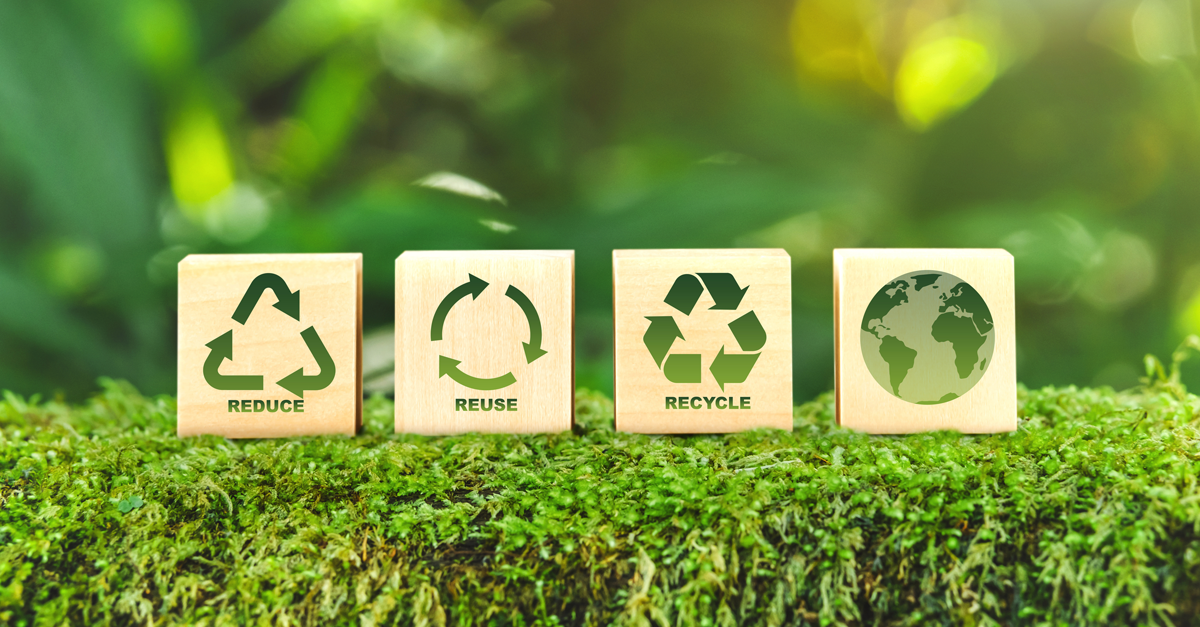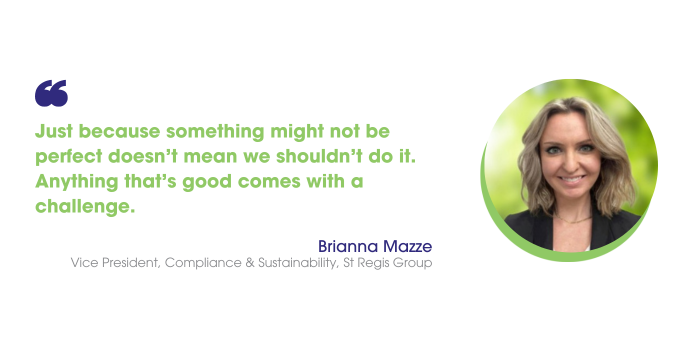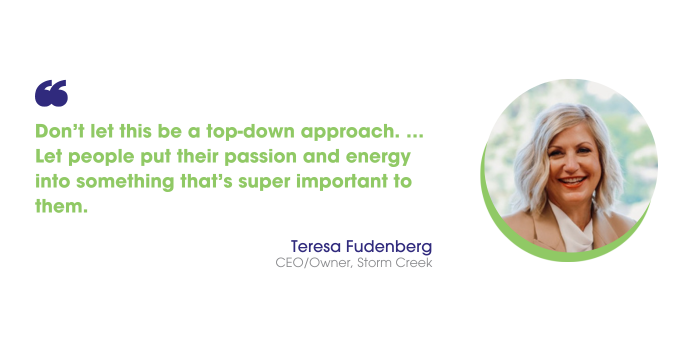Recycling 101: What You Need To Know

By now, most people are familiar with the triangular “chasing arrows” recycling symbol. But many don’t know that this symbol doesn’t mean a plastic product is recyclable. It’s really just an identifier of the material and its potential to be recycled. Whether something is actually recyclable depends on whether a facility in your area will accept it for recycling.
This misconception is one of the biggest challenges to successful recycling, says Brianna Mazze, vice president of compliance and sustainability at Ontario-based St Regis Group. “If your local municipality or jurisdiction does accept that type of recycling, then yes, it is recyclable,” Mazze says, “but it’s very dependent on where you are and where you’re recycling it.”
To find out what can be recycled in your area, start with your local solid waste handler, whether city, county or private. Someone there should be able to inform you what can and can’t be accepted for recycling in your area.
- The U.S. Environmental Protection Agency lists resources and best practices on its Reduce, Reuse, Recycle page.
- Some state websites have waste management resources – for example, the Illinois EPA.
- Look up how and where to recycle by material and ZIP code at Earth911 or Recycle Nation.
- In Canada, city websites offer a Waste Wizard to look up proper disposal or recycling info.
What Is ‘Contamination’?
The other major challenge, Mazze says, is contamination. This doesn’t mean failure to rinse used food containers, although that’s a good practice to avoid smells and pests. In the context of recycling, contamination happens when something enters a specific stream that isn’t supposed to be there, like mixed materials that can’t be separated or things that can’t be recycled gumming up the works in the sorting facility.
“If you have a tumbler, for example, that has a stainless steel outside and then a plastic liner wall, that’s contamination either way,” says Mazze. “It can’t go into plastic because it contains stainless steel, and it can’t go into stainless steel because it contains plastic.”
Single-use plastic bags are a big problem for materials recovery facilities, too. Although some recyclers accept these, most facilities aren’t designed to handle the thin plastic film, which gets wrapped up in the equipment and causes delays or even damage. Black plastic is another, because the sorting machinery can’t recognize it. (This is why it’s a good idea to separate caps from bottles before tossing them in the recycling bin, too.)

Metal cans are some of the easiest materials to recycle, says Mazze. Magnets and Eddy currents (a specific type of electrical current) make sorting metals simple, and unlike plastics, aluminum and steel don’t lose their properties when being remade into new products.
“Soda cans can actually go through the recycling process in like something like 60 days and they’re back on the shelf because they’re so easy to recycle,” she adds, “and aluminum actually uses 95% less energy than new aluminum to make, so it’s a very sustainable material.”
Paper products are also easy to recycle, and Mazze says that’s a good place to start. “You could get a service to come and pick up your paper recycling. They shred it, and they do all kinds of great stuff with that,” she says. “That’s a better way to recycle paper, too, because it doesn’t need any sorting.”
Recycling alone isn’t the solution to reducing waste and pollution, adds Mazze, but it’s an important place to start. “Just because something might not be perfect doesn’t mean we shouldn’t do it,” she says. “Anything that’s good comes with a challenge, so if it’s flawed, it doesn’t mean we should just give up on it. We should improve.”
Walking The Talk
Minnesota-based apparel supplier Storm Creek has been a leader in bringing upcycled polyester to promo apparel, but CEO Teresa Fudenberg says it can’t be only about the products. Last year, the company took advantage of a county grant to help jumpstart the company’s recycling and waste reduction efforts.
“We had to demonstrate that we’re not in it just from a product [standpoint] and that we’re all-around wanting to be part of a healthier environment and sustainable practices,” she says.
Storm Creek used the grant money first to engage a third-party auditor and then established an in-house environmental task force of employees who participated in the audit and helped make recommendations. “This was a really cool way to get cross-functional people involved,” Fudenberg says. “People that I never thought would be interested really jumped in on it.”
Educating everyone about what could and couldn’t be recycled, as well as why the company chose the specific changes it did, was also a critical part of the effort, says Fudenberg. The company already offers “Sustainability School” to customers, so expanding that education to employees made perfect sense.
“There’s such an education gap, and that’s where we really hit it hard after the audit and with our environmental task force, because it’s literally back to the basics,” she says. “… People have this misconception that if it’s got a triangle with a number in it, it can be recycled.”
Making recycling convenient was another factor. “If it’s not convenient, not everybody’s going to do it,” says Fudenberg, and Storm Creek has made it so convenient on site that employees bring items from home for recycling.
Changes made after the audit included:
- A paper recycling bin paired with every desk waste bin (and next to the copier).
- Recycling collection in the kitchen/break room.
- Clear signage as to what can be put in the recycling bins and what can’t.
- A recycling station on site for employees to bring items from home.
- Community recycling collection of clothing, single-use bags and batteries during public pop-up shopping events held twice a year.
- Switching from single-serving beverages to a Bevi machine for on-demand refreshments.
- Replacing single-use kitchen items like plastic forks and paper plates with real cutlery, dishes and glasses (and a dishwasher).
Polybags are a particular challenge in promo, because they fall into that hard-to-recycle “single-use plastic bag” category. Through the grant, Storm Creek was also able to connect with a local waste handler that comes twice a week to pick up those polybags that can’t be recycled with everything else. The company has spread the word to local decorators as well. In less than a year, Fudenberg estimates that more than 3,000 pounds of polybags have been diverted to the proper place for recycling.

Perhaps the most important lesson from these efforts is that everything makes a difference, she adds, and it’s important to look as a team for resources that can help you figure out what would make the greatest impact.
“We’re small, but everything makes a difference,” Fudenberg says, “and just having the conversation with every department to look through what they could do and find something there, it was actually really easy for everybody to come up with something, and then it also got people really involved.”
Don’t take a top-down approach, she adds, because like any endeavor, employee engagement will be critical to success. “You’re going to have people who have a shared passion for this and more,” she says. “Chances are, there’s a group just waiting to jump in and act on something for the company. … Let people put their passion and energy into something that’s super important to them.”

